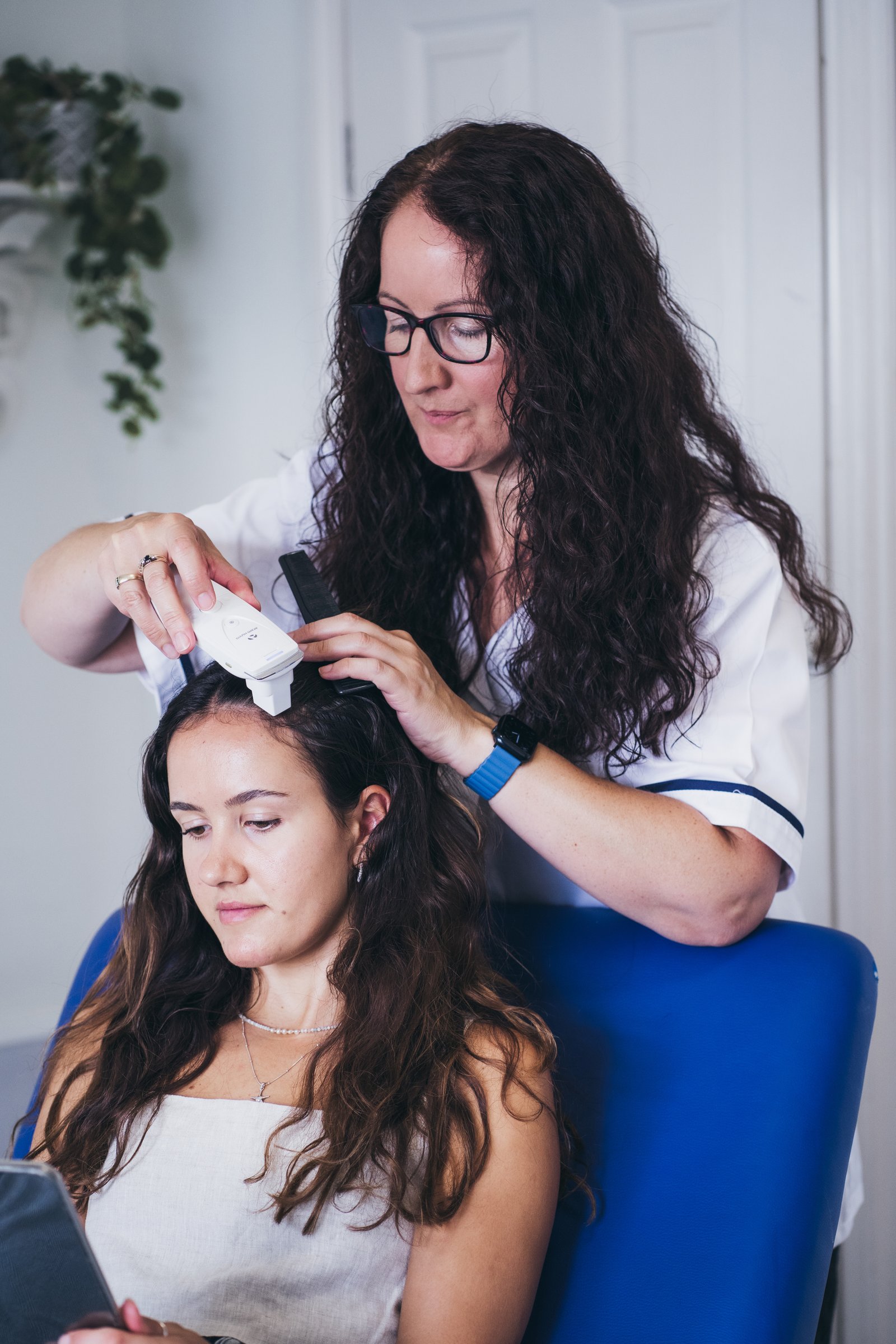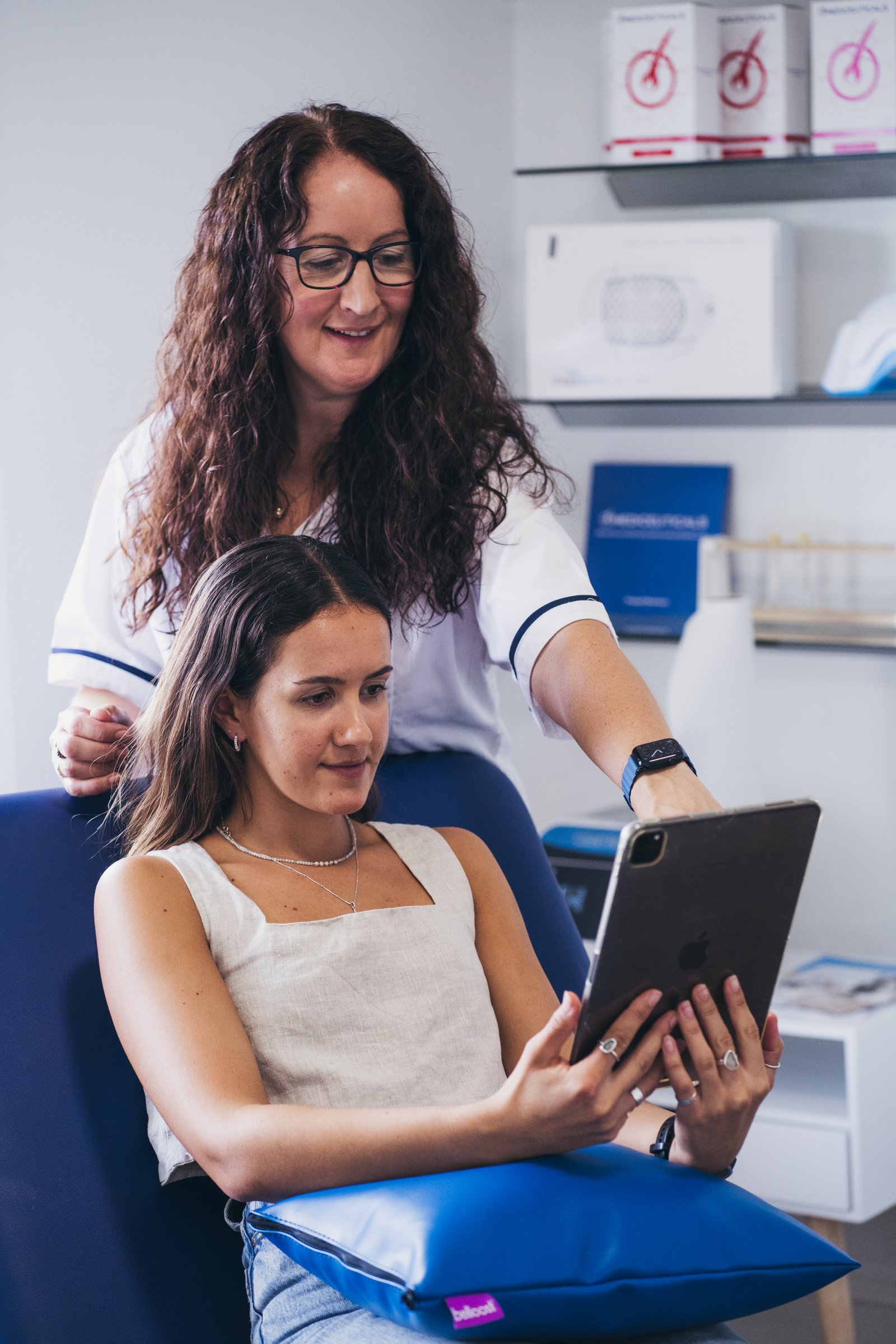Hair Loss Treatments
Physiology of the skin
The skin is the largest organ of the body , accounting for about 15% of the total adult body weight. It performs many vital functions, including protection against external physical, chemical, and biological assailants, as well as prevention of excess water loss from the body and has a role in thermoregulation.
The skin is composed of three layers: epidermis, the dermis, and the subcutaneous tissue.
- The outer most level, the epidermis, consists of a specific constellation of cells known as keratinocytes, which function to synthesise keratin, a long, threadlike protein with a protective role. The epidermis provides a waterproof barrier and contributes to skin tone.
- The middle layer, the dermis, is fundamentally made up of the fibrillar structural protein known as collagen.
- The dermis lies on the subcutaneous tissue, or panniculus, which contains small lobes of fat cells known as lipocytes. The fat forms a layer that insulates the body from cold and helps absorb shock and damage to the internal organs. It also provides structural support for the skin.
- The thickness of these layers varies considerably, depending on the geographic location on the anatomy of the body. The eyelid, for example, has the thinnest layer of the epidermis, measuring less than 0.1mm, whereas the palms and soles of the feet have the thickest epidermal layer., measuring approximately 1.5mm. The dermis is thickest on the back, where it is 30-40 times as thick as the overlying epidermis.
The loss of elastin and collagen in the skin as we age causes the skin to hang loosely. The skin also becomes more transparent as we age due to thinning of the epidermis (surface layer of the skin) .

Microneedling
Microneedling also known as as skin needling or collagen induction therapy is a type of treatment that uses small needles to cause tiny punctures in the skin. These small contact points encourage the body to create a wound healing response and renew the skin cells. As your skin repairs, the production of collagen and elastin is triggered to give an almost immediate plumping effect. It can also help tackle other skin damage such as scarring, dark marks, sun damage and ageing.
Benefits of Microneedling
Microneedling is commonly used to treat the following skin conditions:-
- Dull skin: Rejuvenate tired and dull skin and combat the initial signs of ageing.
- Wrinkles: Fine lines and wrinkles on the face can be visibly reduced, as microneedling triggers collagen production.
- Scarring: Scars from acne and chicken pox can be improved and an uneven texture can be smoothed out with microneedling.
- Pigmentation: Can help to fade dark patches such as pigmentation due to sun damage or ageing.
Microneedling is a great treatment for darker skin because it doesn’t involve peels or lasers, which can cause pigmentation issues.

Types of microneedling treatments
Skin pen: This is a unique device which creates hundreds to thousands of “micro” skin punctures per second to stimulate the skin’s natural wound healing process- inflammation, proliferation and remodelling- to prompt tissue remodelling without causing scar tissue formation. The needle depths can also be controlled in a twist of the cartridge head from 0.25 to 1.5mm. The microneedling pen treatment is targeted and ideal for clients who have localised areas of concern.
This device provides a way to reduce lines and wrinkles, dramatically improve most types of scars, and treat hair loss in both men and women. It is clinically proven to fight the appearance of neck wrinkles and reduce the appearance of acne scars. It is suitable for all skin types and can be used on most parts of the body, including the face and neck. It also has a single use lock out feature, removing any possibility of cross contamination.
Platelet Rich Plasma (PRP)
Plasma is a component found in your blood that contains proteins, they support cell growth. PRP is a treatment that isolates the plasma from the blood and then concentrates it. Blood is taken from the client and placed into a centrifuge which separates the blood from the plasma. Injecting the PRP into the tissues of the skin (via microneedling, a mesothetapy gun or direct injections) triggers our body to produce new healthy cells and promotes healing. As the tissue growth factors are concentrated in the PRP injections, it stimulates our body’s tissues to heal faster.
PRP can be used for both skin rejuvenation and hair restoration.
PRP facial for skin rejuvenation
PRP injections are a great treatment for anti-ageing and skin revitalisation as they strengthen collagen and promote a refreshed, youthful appearance. The restorative properties of PRP for the skin are a great solution if clients suffer from the following concerns:-
- Skin elasticity and volume loss
- Crows feet and dark under eye circles
- Acne scarring
- Dull skin complexion
- Fine lines and wrinkles
PRP therapy is mostly used around the face, especially around the eyes, nose and mouth. However it can be used on the backs of the hands and over the body to create a youthful and more radiant appearance.
For PRP facial treatments we recommend a course of 3 treatments, one month apart. A top up is then required/offered 6-12 months after to upkeep desired results.
PRP for hair loss
PRP injections are a proven treatment that stimulates and regenerates hair growth for both men and women. As a hair treatment, PRP works by introducing platelets(rich in growth factors) to targeted areas, improving the blood supply to damaged hair follicles so they can get the nutrition they need to survive. By administering PRP in specific regions, healthy hair growth is promoted.
It is suitable for clients who are noticing their hair thinning out, especially post pregnancy or during menopause. For PRP hair loss treatments we recommend a minimum of 3 treatments, once a month and then a top up 6-12 months after to upkeep the desired results.
Benefits of the treatment:
- Addresses both the epidermis and dermis
- Treats lines, pigmentation. Scars, and hair loss by increasing cell renewal time, stimulating collagen and the natural healing mechanism of the skin.
- Reduces the appearance of fine lines and wrinkles
- Visibly reduces scarring, sun damage and pigmentation
- Skin becomes healthier and thicker
- Can stimulate hair growth
- Increased product penetration

Advantages of PRP vs other rejuvenating treatments:
PRP utilises your own natural resources, therefore, it minimises the risk of allergic reaction or reaction during the treatment. The organic nature of this procedure is great for clients who want to avoid injecting anything non-occurring in the body. The results of PRP are naturally occurring so the results are subtle, natural, long lasting and require no surgical interventions.
- PRP is a minimal risk treatment
- No downtime
- Effective cell rejuvenating treatment
- Full results from 6-12 months
- Proven hair rejuvenating results, with quick and easy treatment compared to other hair loss treatments.
Side effects:
PRP can trigger some inflammation to the injection site, as well as small amounts of bruising or redness/heat. Also, on rare occasions much like any other injectable cosmetic treatment, an infection can occur. It is very important to follow the aftercare instructions which we will go through on the day of your appointment.
Contraindications:
The treatment is not recommended for clients who are or have:
- pregnant or breast feeding
- autoimmune conditions
- currently undergoing anticoagulation treatments
- contracted any type of cancer(wait 6-12 months after treatment has ended)
- severe anaemia
- low platelet count
- abnormal platelet function
- open wounds, sores, or irritated skin in the treatment area
- HIV, Hepatitis B and /or C
- any history of keloid scarring
- currently taking drugs with the ingredient isotretinion (such as Ro-Acutane) wait 6 months after finishing treatment.
The PRP Therapy Process
Step one: A small amount of blood is taken from your arm in the same way as if you were having a blood test. A sample of your blood is then put into a centrifuge, a machine used to separate fluids of different densities.
Step two: The centrifuge separates the sample into 3 layers to produce the PRP. The platelets are rich in growth factors and are concentrated in the plasma(gold liquid). These growth factors are what will encourage skin and hair rejuvenation. The PRP is then isolated from the sample and is drawn up into a syringe.
Step 3: The PRP is activated in vitro and injected back into your skin or scalp to stimulate the tissue and encourage natural, faster skin rejuvenation/hair growth, this treatment is precise, and we inject the PRP into the exact locations of the area you want to target.
